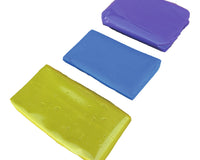Steam cleaning has become a buzzword in the car detailing industry, celebrated for its eco-friendly, chemical-free approach to deep cleaning. From professional detailers to DIY enthusiasts, many now use steam as a powerful way to sanitise and refresh vehicle interiors. It promises to remove stubborn dirt, kill bacteria, and eliminate odours without the need for harsh detergents or excessive water. However, like all detailing techniques, it comes with its share of advantages and disadvantages. Understanding both sides will help you determine whether steam cleaning is the right choice for your car’s interior care routine.
Steam cleaning uses pressurised vapour to lift dirt and grime from surfaces such as carpets, upholstery, dashboards, vents, and even leather seats. The steam is heated to high temperatures—often exceeding 120°C—which helps dissolve stubborn contaminants and kill germs on contact. It’s particularly valued for reaching tight crevices and hard-to-access areas that traditional cleaning methods often miss. Yet, despite its effectiveness, improper use can lead to issues like moisture buildup, surface damage, or even electrical problems in sensitive areas.
By weighing the pros and cons, you can make an informed decision about how and when to use steam cleaning in your detailing process. Whether you’re a professional detailer or an enthusiast maintaining your car at home, knowing what to expect is key to achieving the best results safely.
The Advantages of Steam Cleaning Car Interiors
Deep Cleaning Power Without Harsh Chemicals
One of the most significant advantages of steam cleaning is its ability to deliver a deep clean without relying on chemical cleaners. The high temperature of steam breaks down dirt, grease, and stains effectively, loosening them from surfaces for easy removal. This makes it ideal for cleaning upholstery, carpets, and even plastic trims. Because steam penetrates fibres and pores, it lifts out contaminants that would otherwise require aggressive scrubbing or chemical degreasers.
The chemical-free nature of steam cleaning is also beneficial for individuals sensitive to strong cleaning agents or synthetic fragrances. It leaves no residue behind, ensuring that the car interior feels fresh and natural. This makes it a great option for households with children, pets, or allergy sufferers, where maintaining a toxin-free environment is important. Furthermore, by reducing the use of chemicals, steam cleaning also helps preserve delicate materials such as leather and alcantara, which can deteriorate over time when exposed to harsh detergents.
Kills Bacteria, Germs, and Odours
Steam cleaning doesn’t just make surfaces look clean—it sanitises them at a microscopic level. The intense heat kills up to 99% of bacteria, viruses, and mould spores, making it one of the most hygienic cleaning methods available. This is particularly beneficial for vehicle interiors, which often harbour hidden germs in steering wheels, seat creases, air vents, and door handles. Over time, these areas can become breeding grounds for bacteria, especially in vehicles used daily or for shared transport.
Additionally, steam cleaning helps eliminate lingering odours caused by smoke, pets, food spills, or mildew. Rather than masking smells with air fresheners, it neutralises the source of the odour entirely. By penetrating porous materials such as carpets and upholstery, steam removes deeply embedded contaminants that cause bad smells, leaving the cabin with a genuinely fresh scent. For anyone dealing with stubborn interior odours, this alone can be a major reason to choose steam cleaning.
Safe for Most Surfaces When Done Correctly
When used properly, steam cleaning is remarkably safe for a wide variety of materials found inside vehicles. It can effectively clean fabric seats, carpets, dashboard plastics, door panels, vinyl, and even leather—provided the temperature and technique are adjusted accordingly. Unlike soaking surfaces with water or liquid cleaners, steam introduces minimal moisture, reducing the risk of over-wetting and long drying times.
Steam also excels at cleaning intricate areas that are hard to reach using traditional methods, such as air vents, seat seams, buttons, and switches. Its fine vapour easily dislodges dust and dirt trapped in crevices, which can then be wiped away with a clean microfibre cloth. This makes steam cleaning not only efficient but also capable of achieving a level of precision that typical vacuuming or wiping cannot match.
Eco-Friendly and Cost-Effective
Steam cleaning uses only water, making it one of the most environmentally friendly detailing methods available. By eliminating the need for chemical cleaners, it reduces plastic waste from product containers and minimises chemical runoff into the environment. In the long term, this translates into lower costs for the user since there is no need to purchase multiple interior cleaners or stain removers.
For professional detailers, steam cleaning also saves time and increases productivity. Because it simultaneously cleans and sanitises, it often reduces the number of products and steps needed to complete an interior detail. This makes it a cost-effective solution for those managing multiple vehicles or running a detailing business.

The Disadvantages of Steam Cleaning Car Interiors
Potential Damage from Improper Use
While steam cleaning is safe in skilled hands, improper use can cause damage to interior materials. Excessive heat or moisture can warp plastic trims, cause leather to dry out, or even damage sensitive electronic components. This is especially true for areas such as infotainment systems, dashboard screens, or power window controls. Applying steam too closely or for too long on these surfaces can lead to costly repairs.
For this reason, steam cleaning requires knowledge of how different materials react to heat and moisture. Leather, for example, should be cleaned using lower steam pressure and followed immediately by conditioning to restore natural oils. Similarly, fabric seats should not be saturated with steam as trapped moisture can lead to mould or mildew growth if not properly dried.
Requires Proper Equipment and Technique
Steam cleaning may look straightforward, but achieving professional results requires a quality steam cleaner and an understanding of its settings. Not all steamers are created equal—cheap consumer-grade models often lack consistent pressure or heat control, leading to uneven cleaning or insufficient sanitisation. Professional steamers, on the other hand, provide adjustable temperature and pressure levels, ensuring safety and effectiveness on all surfaces.
Additionally, technique plays a huge role. Moving too slowly can overheat areas, while moving too quickly may not provide enough heat contact to loosen dirt. Knowing how to balance pressure, distance, and dwell time takes practice. Without the right approach, the results may fall short of expectations, leaving some stains behind or even creating streaks.
Limited Effectiveness on Heavy Stains and Deep Contaminants
Although steam cleaning is excellent for general cleaning and sanitisation, it’s not always the best solution for heavily soiled interiors. Deep-set stains, oil-based spills, or embedded grime may require pre-treatment with specialised cleaners before steaming. Steam can loosen such contaminants but may not fully extract them from fabric fibres or carpet piles.
In these situations, using an extraction cleaner or wet vacuum after steaming may be necessary to remove the loosened dirt completely. Steam cleaning is more of a maintenance and sanitising tool rather than a full stain-removal method. Expecting it to remove deeply embedded contaminants without any pre-treatment can lead to disappointment.
Moisture Management and Drying Time
Although steam cleaning uses minimal water, it still introduces moisture into the interior. If the vehicle is not allowed to dry properly afterwards, condensation or dampness may linger, especially in humid conditions. This can lead to unpleasant odours or mildew formation, particularly in fabrics and under-seat padding.
Proper ventilation after steam cleaning is essential. Doors and windows should be left open for some time to allow moisture to evaporate. In professional setups, air movers or dehumidifiers are often used to speed up the drying process. Skipping this step can negate many of the hygiene benefits that steam cleaning provides.
When Steam Cleaning Is Most Effective
Steam cleaning works best as part of a regular maintenance routine rather than as a one-time deep-cleaning method. It’s particularly useful for disinfecting, refreshing surfaces, and maintaining a clean, odour-free cabin. For those who frequently transport passengers, pets, or children, steam cleaning provides a safe and hygienic option without exposing the interior to harsh chemicals.
It’s also ideal for cleaning hard-to-reach or delicate areas such as dashboards, vents, and fabric seams where traditional methods might struggle. However, for deep stains or oily residues, combining steam with other detailing products yields the best results. By using steam for maintenance and targeted cleaning, car owners can preserve their interior materials and enjoy a fresh, sanitised environment every time they drive.
Conclusion: Is Steam Cleaning Worth It?
Steam cleaning remains one of the most advanced and environmentally responsible ways to clean and sanitise a car’s interior. Its ability to eliminate germs, odours, and dirt without chemicals makes it a favourite among both professionals and environmentally conscious car owners. When done correctly, it leaves interiors looking and feeling fresh while protecting occupants from allergens and bacteria.
However, it’s not a magic solution for every cleaning situation. Improper use or low-quality equipment can lead to surface damage, excessive moisture, or incomplete stain removal. Understanding its limitations and pairing it with the right techniques ensures that steam cleaning delivers the maximum benefits with minimal risk.
For car owners seeking a safe, sustainable, and effective interior cleaning method, steam cleaning is undoubtedly worth considering. It offers a professional-level finish while keeping your vehicle hygienic, odour-free, and well-maintained—an investment in both comfort and cleanliness.




